Home / Intralesional Drug
Intralesional Drug
Rejuvenate and Transform: Discover the Magic of Chemical Peels
Overview
An intralesional steroid injection is a treatment wherein a corticosteroid (steroid) is injected directly into the treatment area or immediately below the skin. This Intralesional injection treatment can help with various skin issues. Such as:
- Keloid and Hypertrophic scars treatment
- Neurodermatitis
- Localised psoriasis on skin treatment
- Acne cysts
- Localised inflammatory skin diseases
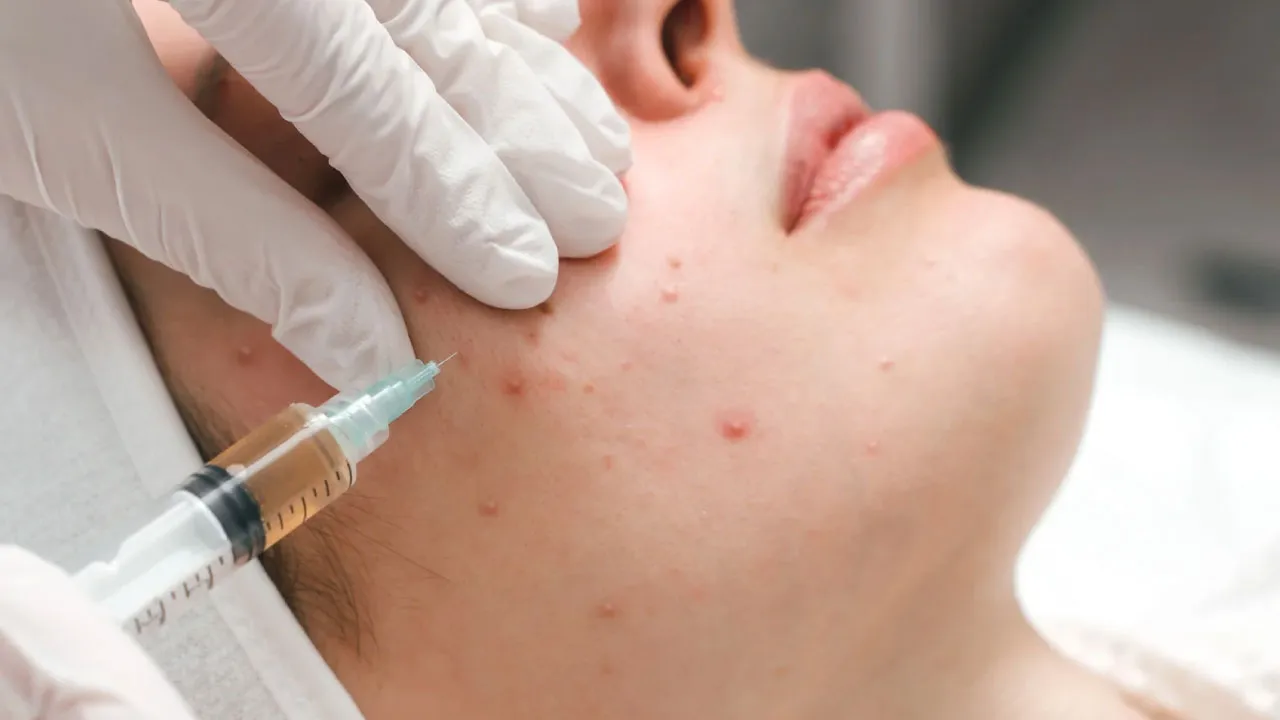
Types Of Intralesional Drug
The selection of an Intralesional Drug depends on the specific skin issue, the intended outcomes, and the unique characteristics of the skin. There are several types of intralesional drugs, each with varying levels of penetration and effectiveness.
| Treatment Type | Name Of Drug | Conditions Treated | Probable Downtime |
|---|---|---|---|
| Corticosteroid Injection | Triamcinolone Acetonide | Keloids, hypertrophic scars, severe acne | Minimal downtime, 24-48 hours |
| Antifungal Injection | Amphotericin B | Fungal infections (e.g., sporotrichosis) | Minimal downtime, 24-48 hours |
| Immunotherapy Injection | Interferon-alpha | Warts, certain skin cancers | Moderate downtime, 2-4 days |
Fantastic Results Of Intralesional Drug
Intralesional drug treatments have shown remarkable efficacy in clinical outcomes, visibly improving conditions such as skin lesions and keloids. Before-and-after images of treated patients vividly demonstrate significant reduction in lesion size and improved skin texture, underscoring the effectiveness of this therapeutic approach. These results highlight the promising potential of intralesional drug therapy in dermatology and beyond.
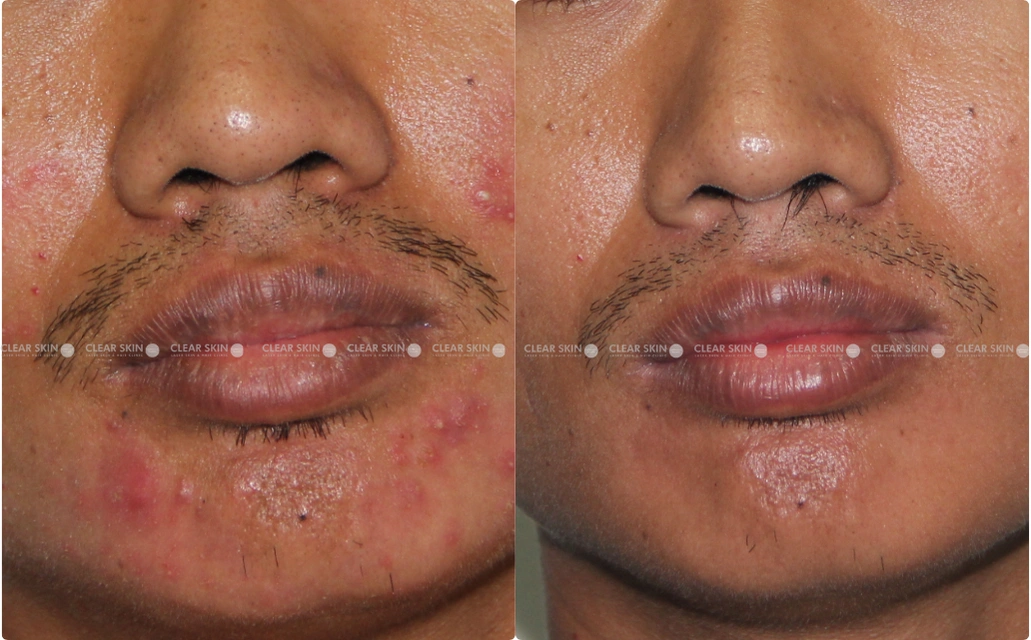
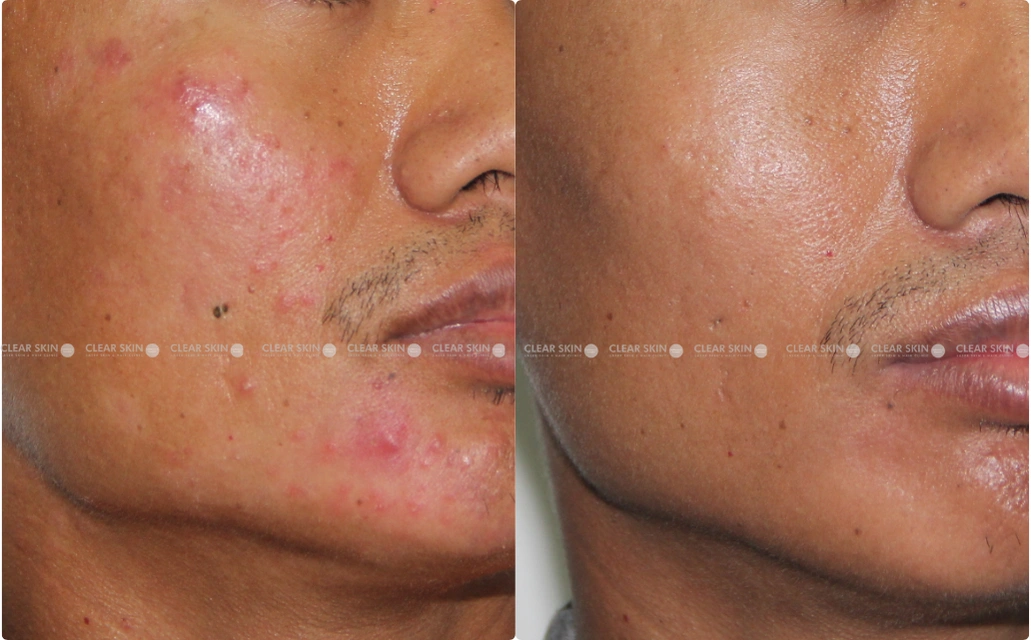
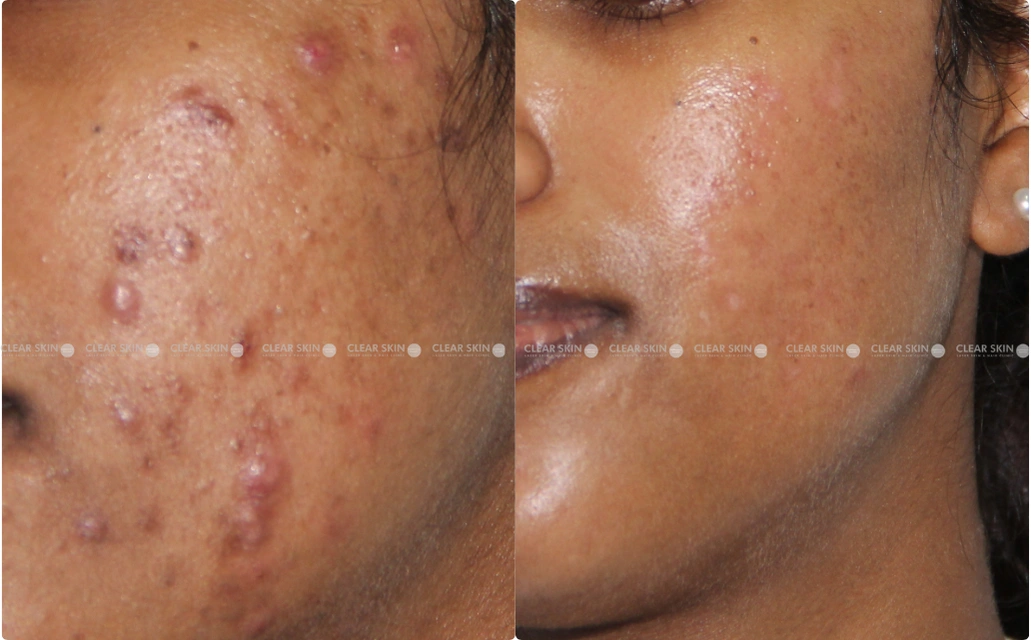
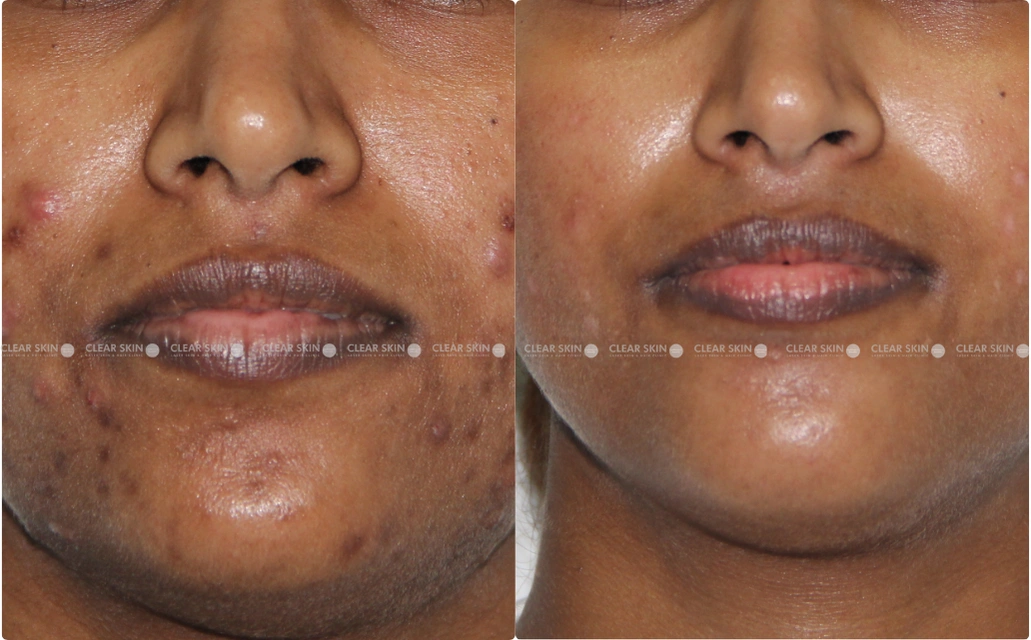
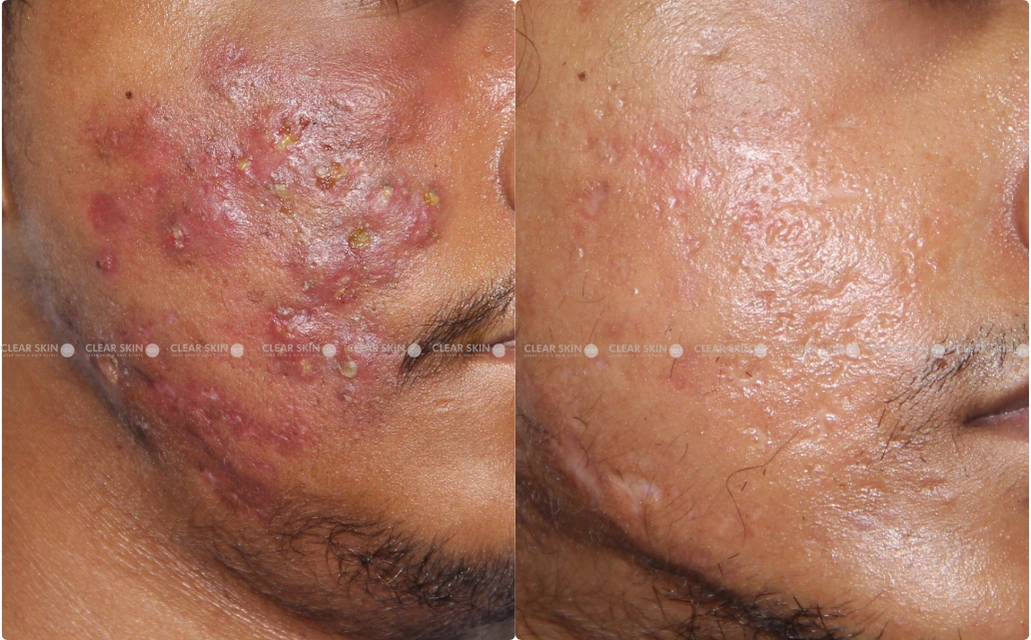
Since 34+ Years, Helping Thousands Achieve Radiant Skin.
(You are one click away from flawless skin)
Cost Of Intralesional Drug Treatment In Pune
The cost of Intralesional Drug treatment in Pune varies depending on the specific medication and the complexity of the condition being treated. Patients can expect prices to typically range from ₹1,500 to ₹5,000 per session for intralesional drug therapy in Pune, influenced by the clinic’s location and reputation. It’s advisable for patients to consult with dermatologists or healthcare providers in Pune to get precise cost estimates tailored to their individual treatment needs.
| Condition | Min. Cost Per Session | Max. Cost Per Session | Avg. Cost At Clearskin |
|---|---|---|---|
| Acne | Rs. 1500 | Rs. 5000 | Rs. 1500 |
Get Free Cost Estimate For Intralesional Drug Treatment
Send your photos and get the tentative cost of treatment at Clearskin
Process Of Intralesional Drug
Patient’s Guide To Intralesional Drug
All you need to know

Intralesional Drug treatment injects medication directly into skin lesions or scars to reduce inflammation, promote healing, and improve skin appearance.
Steps Involved
1 Patient Evaluation
Assess medical history and current condition to determine suitability for intralesional steroid injection.
2 Preparation
Treatment area will be cleaned with an antiseptic solution and administer local anesthesia if needed.
3 Injection Technique
Use of fine needle to precisely inject corticosteroid into the lesion or affected skin area.
4 Medication Choice
Selection of appropriate corticosteroid type based on the dermatologist’s recommendation and the specific condition.
5 Post-Injection Care
Pressure to the site will be applied to minimize bleeding and advise on post-treatment activity restrictions.
6 Follow-Up
Monitor response and adjust injection schedule or dosage as necessary for optimal management.
The process of a Intralesional Drug treatment involves several key steps:
Patient Evaluation: Assess medical history and current condition to determine suitability.
Preparation: Clean the treatment area with antiseptic solution; apply local anesthesia if needed.
Injection Technique: Use a fine needle to inject corticosteroid directly into the lesion or affected skin area.
Medication Choice: Select corticosteroid type (e.g., triamcinolone acetonide, betamethasone) based on condition and dermatologist’s preference.
Post-Injection Care: Apply pressure to site to reduce bleeding; advise patient on activity restrictions.
Expected Results: Potential improvement in symptoms like inflammation, itching, or pain.
Potential Side Effects: Include temporary pain, bruising, swelling, and rarely, systemic effects like adrenal suppression.
Adjunctive Therapy: Often used alongside other treatments for comprehensive management.
Adjustments: Dermatologist may alter injection schedule or dosage based on response and disease progression.
In summary, intralesional steroid injections provide localized relief for inflammatory skin conditions, offering a targeted approach with minimized systemic impact and tailored management.
Post Procedure Care
After the procedure, patients are advised to avoid strenuous activities involving the treated area for a few days to reduce the risk of irritation or disruption of the injected medication. It’s normal to experience mild discomfort, bruising, or swelling at the injection site, which typically resolves within a few days. Dermatologists may recommend applying ice packs intermittently to reduce swelling and using over-the-counter pain relievers if needed.
Regular monitoring of the injection site is essential. Patients should watch for signs of infection such as increased redness, warmth, or drainage from the site and report any unusual symptoms promptly to their healthcare provider. Follow-up appointments are scheduled to assess treatment efficacy, monitor for potential side effects, and determine if additional injections or alternative therapies are necessary to achieve optimal outcomes.
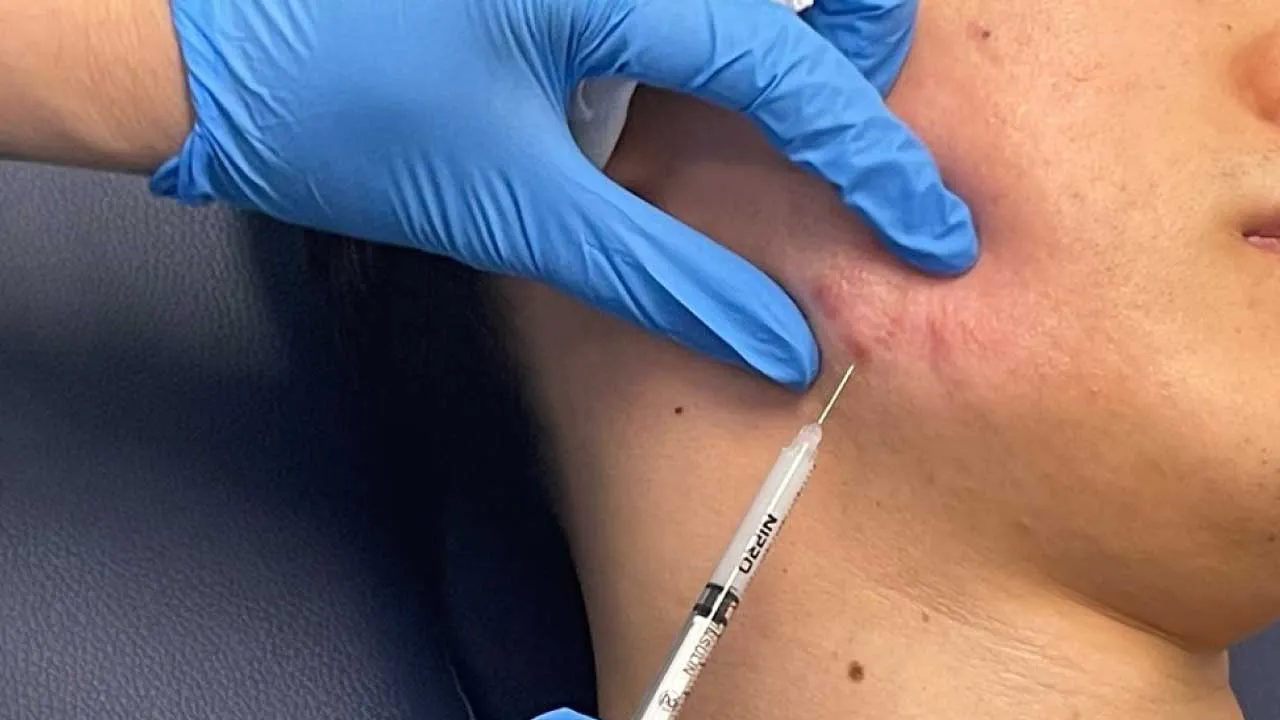
Probable Side Effects
The probable side effects may include:
Potential Side Effects: While generally safe, possible side effects include:
Localized Reactions: Temporary pain, mild swelling, or bruising at the injection site.
Skin Changes: Thinning or lightening of the skin at the injection site, especially with repeated treatments.
Systemic Effects: Rarely, systemic side effects like temporary suppression of the adrenal glands, though this is uncommon with localized injections.
Allergic Reactions: Though rare, allergic reactions such as rash, itching, or swelling might occur.
Infection: There is a minimal risk of infection at the injection site, which is mitigated by thorough cleaning before the procedure.
These side effects are typically mild and transient. It’s important to discuss any concerns with your healthcare provider, who can address your specific situation and ensure the safest and most effective treatment approach for you.
We Are Here To Answer Every Possible Doubt You Have On Intralesional Drug.
If you don’t find answer to your query, then please write down to us. We are always here to help you.
What is Intralesional Drug Therapy?
Intralesional drug therapy involves injecting medication directly into a specific skin lesion or affected area. This targeted approach allows for localized treatment of conditions like keloids, alopecia areata, and certain inflammatory skin disorders.
How does Intralesional Drug Therapy work?
A small needle is used to inject medication directly into the lesion or affected skin area. This method ensures that the medication acts directly at the site of the problem, delivering higher concentrations locally while minimizing systemic side effects.
What conditions can be treated with Intralesional Drug Therapy?
Intralesional drug therapy effectively treats a range of conditions, including keloids and hypertrophic scars, alopecia areata (patchy hair loss), psoriasis plaques, acne cysts, and certain inflammatory skin conditions like lichen planus and granuloma annulare.
What are the benefits of Intralesional Drug Therapy?
The benefits of intralesional drug therapy include direct delivery of medication to the affected area, minimizing systemic side effects compared to oral medications. It effectively treats localized conditions that may not respond to topical treatments alone and often yields faster results than systemic therapies.
Is Intralesional Drug Therapy painful?
Discomfort during the procedure is usually minimal, as a local anesthetic is often used to numb the area before injection. Some patients may experience mild discomfort or a sensation of pressure during the injection.
How long does a session of Intralesional Drug Therapy take?
The duration of a session depends on the number of lesions being treated but typically lasts a few minutes per lesion.
How many sessions are needed for Intralesional Drug Therapy?
The number of sessions required varies depending on the condition being treated, its severity, and individual response to the therapy. Multiple sessions spaced several weeks apart are often needed for optimal results.
What are the possible side effects of Intralesional Drug Therapy?
Common side effects may include temporary pain or discomfort at the injection site, mild swelling, bruising, or changes in skin pigmentation. Serious side effects are rare but may include allergic reactions to the medication.
Who is a suitable candidate for Intralesional Drug Therapy?
Suitable candidates include individuals with localized skin conditions that have not responded adequately to other treatments or those who wish to avoid systemic medications.
Can Intralesional Drug Therapy be combined with other treatments?
Yes, depending on the condition, Intralesional Drug Therapy can be combined with other treatments such as topical medications, oral medications, laser therapy, or surgical procedures to enhance outcomes.
